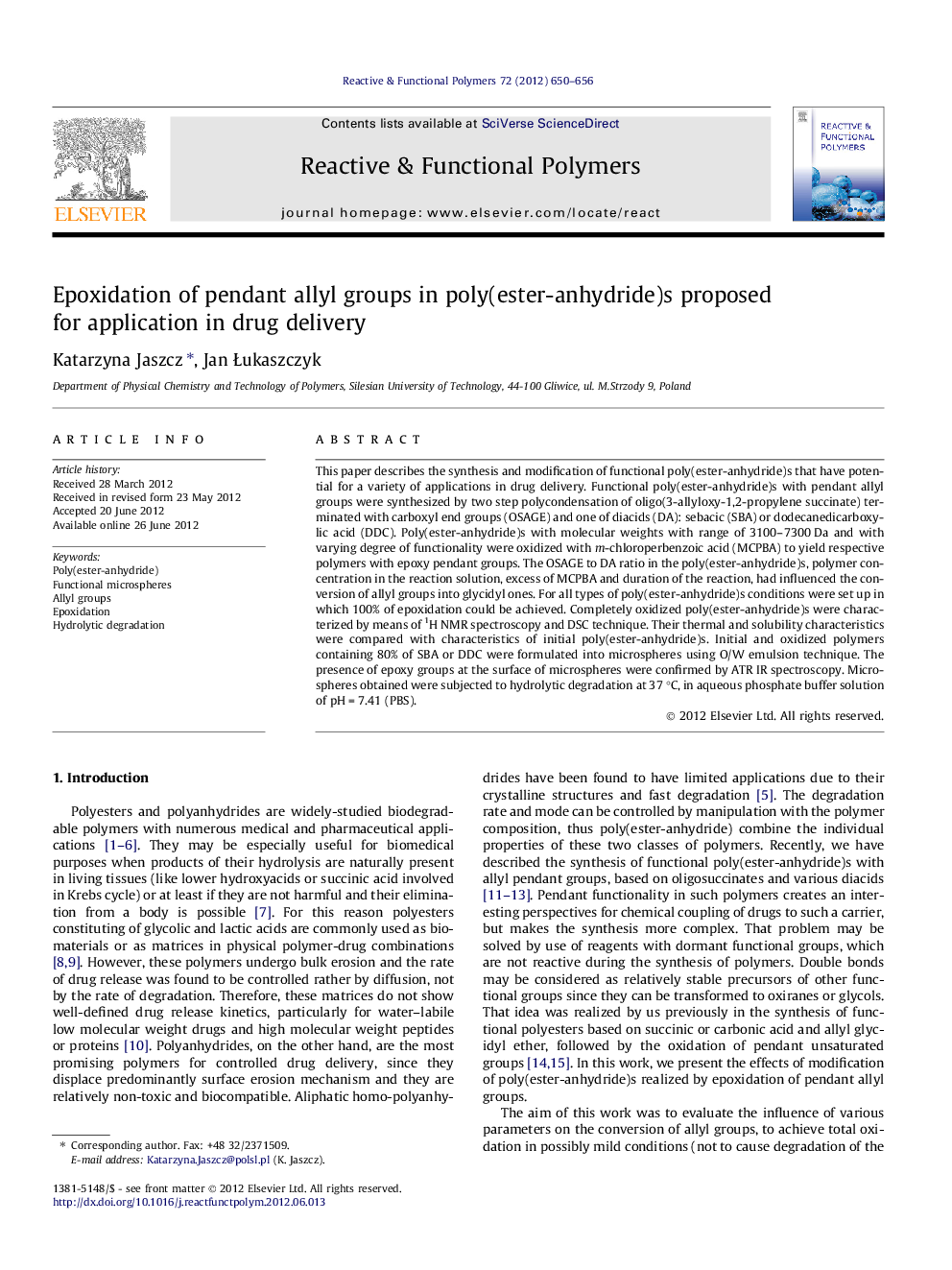| Article ID | Journal | Published Year | Pages | File Type |
|---|---|---|---|---|
| 5210146 | Reactive and Functional Polymers | 2012 | 7 Pages |
Abstract
This paper describes the synthesis and modification of functional poly(ester-anhydride)s that have potential for a variety of applications in drug delivery. Functional poly(ester-anhydride)s with pendant allyl groups were synthesized by two step polycondensation of oligo(3-allyloxy-1,2-propylene succinate) terminated with carboxyl end groups (OSAGE) and one of diacids (DA): sebacic (SBA) or dodecanedicarboxylic acid (DDC). Poly(ester-anhydride)s with molecular weights with range of 3100-7300 Da and with varying degree of functionality were oxidized with m-chloroperbenzoic acid (MCPBA) to yield respective polymers with epoxy pendant groups. The OSAGE to DA ratio in the poly(ester-anhydride)s, polymer concentration in the reaction solution, excess of MCPBA and duration of the reaction, had influenced the conversion of allyl groups into glycidyl ones. For all types of poly(ester-anhydride)s conditions were set up in which 100% of epoxidation could be achieved. Completely oxidized poly(ester-anhydride)s were characterized by means of 1H NMR spectroscopy and DSC technique. Their thermal and solubility characteristics were compared with characteristics of initial poly(ester-anhydride)s. Initial and oxidized polymers containing 80% of SBA or DDC were formulated into microspheres using O/W emulsion technique. The presence of epoxy groups at the surface of microspheres were confirmed by ATR IR spectroscopy. Microspheres obtained were subjected to hydrolytic degradation at 37 °C, in aqueous phosphate buffer solution of pH = 7.41 (PBS).
Related Topics
Physical Sciences and Engineering
Chemistry
Organic Chemistry
Authors
Katarzyna Jaszcz, Jan Åukaszczyk,
